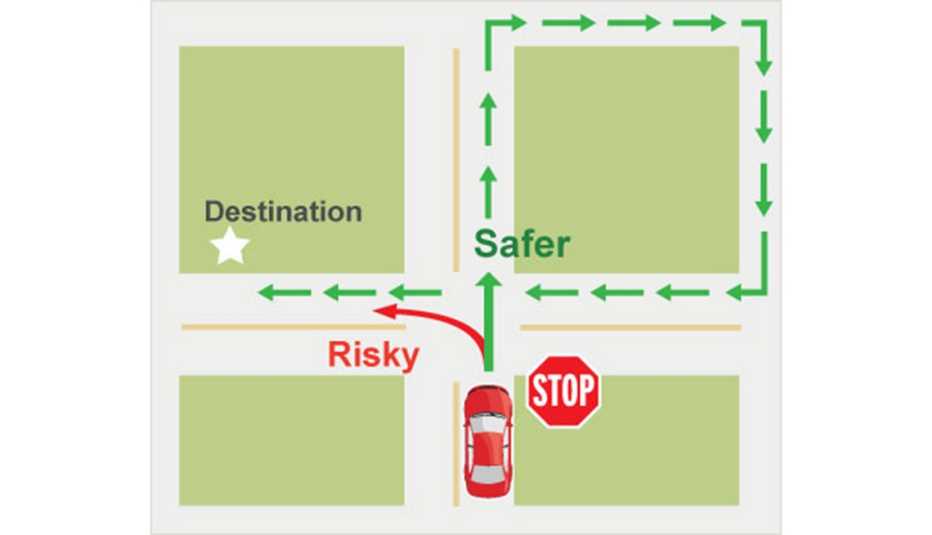AARP Hearing Center


Left turns are one of the most dangerous situations for drivers, and for older drivers in particular. Twenty-five percent of traffic violations result from improper left turns, and left-turn situations have some of the highest crash rates for older adults.
There are many types of left-turn situations. For example, there are single, double, and triple turn lanes; signalized and unsignalized left turns; and left turns out of a dedicated turn lane.
General Right- and Left-Turn Strategies
- Always use your turn signal. Signal your intention far enough in advance; you should signal before braking. Your state laws will tell you how soon to use your turn signal before making a turn.
- Position your vehicle in the proper lane for turning.
- Reduce your speed as you approach the intersection.
- Check the traffic ahead of you, behind you, and to your left and right on the cross street.
- Look ahead in the direction of the turn. Scan for pedestrians and bicyclists. Turn into the nearest lane of traffic going in your direction, or into the proper lane as indicated by traffic signs and lane markings.
- Pedestrians always have priority at crosswalks and intersections, even when unmarked.
Specific Left-Turn Strategies
- Whenever possible, try to use intersections that have a signal with a green left-turn arrow (protected left turn). When the left-turn arrow is no longer green, you must yield to all oncoming vehicles.
- Position your vehicle in the proper lane for turning. For a left turn, be in the lane closest to the centerline.
- On city streets, rather than making a left, consider going to the next intersection and making three right turns. This may take longer, but you will avoid the left turn altogether and reduce your chances of a crash.































.jpg?crop=true&anchor=13,195&q=80&color=ffffffff&u=lywnjt&w=2008&h=1154)





























More From AARP
We Need to Talk: Difficult Conversations About Driving
When — and how — to talk about turning over the car keysHow to Create a Space Cushion While Driving
Keeping enough distance from other vehicles will ensure you have enough room to maneuver